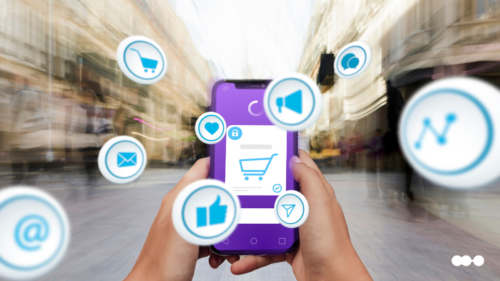ARTICLE SUMMARY
Do you know why content marketing helps at every stage of the buying journey? Do not? There are some tips that help you at your business.

Content marketing is the marketer’s darling. It helps to engage curious customers with a product or service and driving conversions.
But content marketing isn’t as cut-and-dried as simply sharing a blog and making a sale. To really get the most out of your content marketing, it needs to be tailored to every stage of the buying journey.
Read on to discover how you can create content that pushes your customers further down the buyer’s journey towards conversion and beyond.
Recommended reading: Five Ways To Run Your Small Business Like A Big One.
Awareness
It all starts here, at the awareness stage. This is where you source traffic and make potential customers aware of your brand, product or service.
Awareness stage content should capitalize on a customer’s desire or pain point. For example, attention-grabbing headlines such as “Why You’re Wasting Money on Your Current Cell Phone Contract” appeal to a customer’s fear of paying too much for something.
Social media is the ideal conduit for sharing this content and sourcing traffic. It’s affordable and works on a platform that your prospective customers are active on every day. As they scroll their news feeds, they’ll come across your content, thus becoming aware of your brand.
The type of content you’ll use at this stage include:
- Articles (long and short form)
- Social media content
- Ebooks and how-to guides
- Informational content e.g. infographics or explainer videos
- Research (whether original or secondhand)
This type of content doesn’t need to be intensive — go for the soft sell. The key here is to grab the audience’s attention.
Awareness-driving content provides something of value to your customer, whether it’s a solution to a problem or simply some interesting information. Content is the channel through which awareness is sourced, a vital role at this stage.
The Power of Visuals
Don’t underestimate the value of visual content at this stage, either.
If you don’t have a collection of original photos, sourcing an attractive free image and combining it with a text overlay headline (find a free online photo editor for this) makes for an enticing visual hook. Even better than images is video. Again, if you haven’t got video production capabilities, a stock video site like Videvo is a great source.
High-quality visuals included in your social media posts typically generate more likes, shares and comments than text alone.
Research and Consideration
Once you’ve snagged a potential customer’s attention, you need to turn them into leads. Your customers have been made aware of your business, and now they are researching the options open to them.
It is at this stage that you need to highlight what your brand has to offer and why your prospective customer should pick you rather than your competitors.
The type of content you’ll use for the consideration stage will include:
- Comparison guides
- Discussion videos and podcasts
- Case studies
- Expert analyses
A number of factors come into play here. Prices, social proof (think Trustpilot and social media reviews), and other elements your customers will consider are generally out of your hands.
However, a strong brand voice and powerful value proposition go a long way to persuading potential customers that you are the right choice.
Let Your Brand Personality Shine Through
More than anything, customers engage with businesses that have a strong, distinct brand.
For example, take a look at Apple. The tech brand has a strong, clear brand that exudes coolness, and its customer community is practically a customer cult as a result.
And don’t forget your business’s value proposition. This is what makes what you offer so different (and so much more valuable) than what your competitors are offering. Don’t shy away from it — highlight it at every opportunity.
Decision and Purchase
You’ve got your interested leads — now chase that sale. Your prospective buyers are engaged with your brand, and they are proceeding to make a purchase.
But your content marketing doesn’t end here. Just because you’ve got a sale, it doesn’t mean you should neglect your customer. Your content should continue to deliver value and nurture trust, providing advice and support after a buyer has made a purchase.
The content you use at the decision stage might span the following:
- Product demonstration videos
- Product explainer guides
- Post-purchase guarantees e.g. warranty breakdowns
At this stage, content reminds your customer that they are valued, even after parting with their hard-earned dollar. It’s vital because it turns what could be a one-time customer into a return shopper, someone who will come back to your brand time and again.
Customer advocacy
A happy customer will sing your brand’s praises. After they’ve made their purchase, you need to identify satisfied customers and turn them into willing customer advocates.
Content that generates and capitalizes on customer advocates includes:
- Post-purchase customer satisfaction emails
- Social media mentions and outreach
- Customer review videos and blogs
This kind of aftercare content is great for sourcing social proof for your product or service. Reach out to your customers and ask if they’re happy with their purchase. If so, offer a discount code or freebie in return for a review online — now is the perfect time to capitalize on their post-purchase joy.
At the same time, you’ll encounter customers who aren’t as happy with their purchase — and that’s fine. Now is the time to turn negative customer experiences into strong content that works for your brand.
Follow-up with your customers after purchases and invite their criticism. Is there anything they’re not happy with? How could you improve on it?
Pick up on one common piece of criticism and create a blog that highlights it. This might seem counterintuitive, even damaging for your brand. But by acknowledging and owning criticism, you can use it to show how you’re striving to do better — and that’s arguably more powerful than any positive social proof.
Content marketing and the buyer’s journey go hand-in-hand. The former spurs on the latter, teasing your customers through their journey and making them feel valued. Embrace content at every stage and engage your shoppers, and transform the buyer’s journey into a positive experience that benefits your business time and again.









